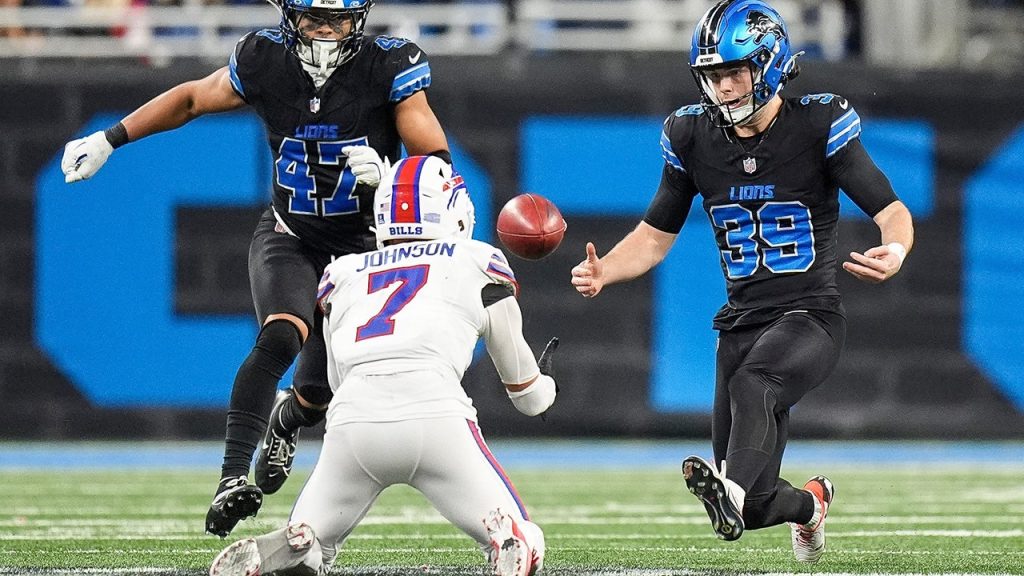The Detroit Lions’ close loss to the Buffalo Bills on Sunday Night Football highlighted the increasing difficulty of recovering onside kicks in the NFL. Trailing by six points in the waning seconds, the Lions attempted a final onside kick, nearly recovering the ball in a chaotic scramble. Bills cornerback Taron Johnson, who ultimately secured the ball, described the play as a rough-and-tumble affair, with players resorting to desperate measures to gain possession. The Lions’ failed attempt underscored a league-wide trend: onside kicks have become increasingly rare and difficult to execute successfully, prompting discussions about potential rule changes to revitalize the play.
The Lions’ struggles with onside kicks weren’t limited to their final attempt. Earlier in the fourth quarter, down by ten points, they tried another onside kick, which was promptly returned by Bills wide receiver Mack Hollins to the Lions’ 5-yard line, leading to a Buffalo touchdown on the ensuing play. Lions head coach Dan Campbell later admitted his regret over the decision, acknowledging the low probability of success. The team’s experience reflects a broader statistical reality: entering Week 15, only 3 out of 41 onside kicks had been recovered league-wide, a dismal success rate that has drawn the attention of the NFL’s competition committee.
The difficulty of recovering onside kicks can be attributed in part to rule changes implemented several years ago aimed at improving player safety on kickoffs. These changes, which restricted the types of blocking strategies allowed, effectively neutered the element of surprise and strategic advantage that teams previously employed on onside kicks. With the element of surprise diminished and the receiving team better prepared, recovering onside kicks has become a statistical long shot.
NFL executive Troy Vincent acknowledged the need to re-evaluate the onside kick, suggesting that the competition committee might consider rule adjustments to make the play more competitive. Vincent emphasized the importance of ensuring that every play, including the onside kick, remains a viable strategic option for teams, regardless of the game situation. He suggested exploring various possibilities, including allowing teams to attempt onside kicks at any point in the game, not just in the final minutes, and potentially reinstating some of the blocking techniques that were previously restricted. The overarching goal, according to Vincent, is to restore the onside kick as a legitimate strategic tool rather than a near-impossible feat.
One potential solution proposed last year by the Philadelphia Eagles involved offering teams a 4th-and-20 scenario from their own 20-yard line as an alternative to the traditional onside kick. If the team successfully converts the 4th-and-20, they retain possession. This proposal aims to provide teams with a more realistic chance of maintaining possession in late-game situations while preserving the excitement and strategic element that onside kicks once offered. It represents a shift away from the physical scrum of a traditional onside kick towards a more skill-based play that relies on offensive execution.
The discussion surrounding onside kicks highlights the ongoing tension between player safety and the strategic richness of the game. While the rule changes that led to the decline of the onside kick were implemented with player safety in mind, the resulting near-extinction of the play has arguably diminished the strategic depth of the game. The NFL’s competition committee faces the challenge of finding a solution that balances the need for player safety with the desire to preserve the onside kick as a viable and exciting play, ensuring that it remains a strategic option rather than a statistical anomaly. The future of the onside kick remains uncertain, but the ongoing conversation suggests that change is likely on the horizon.

